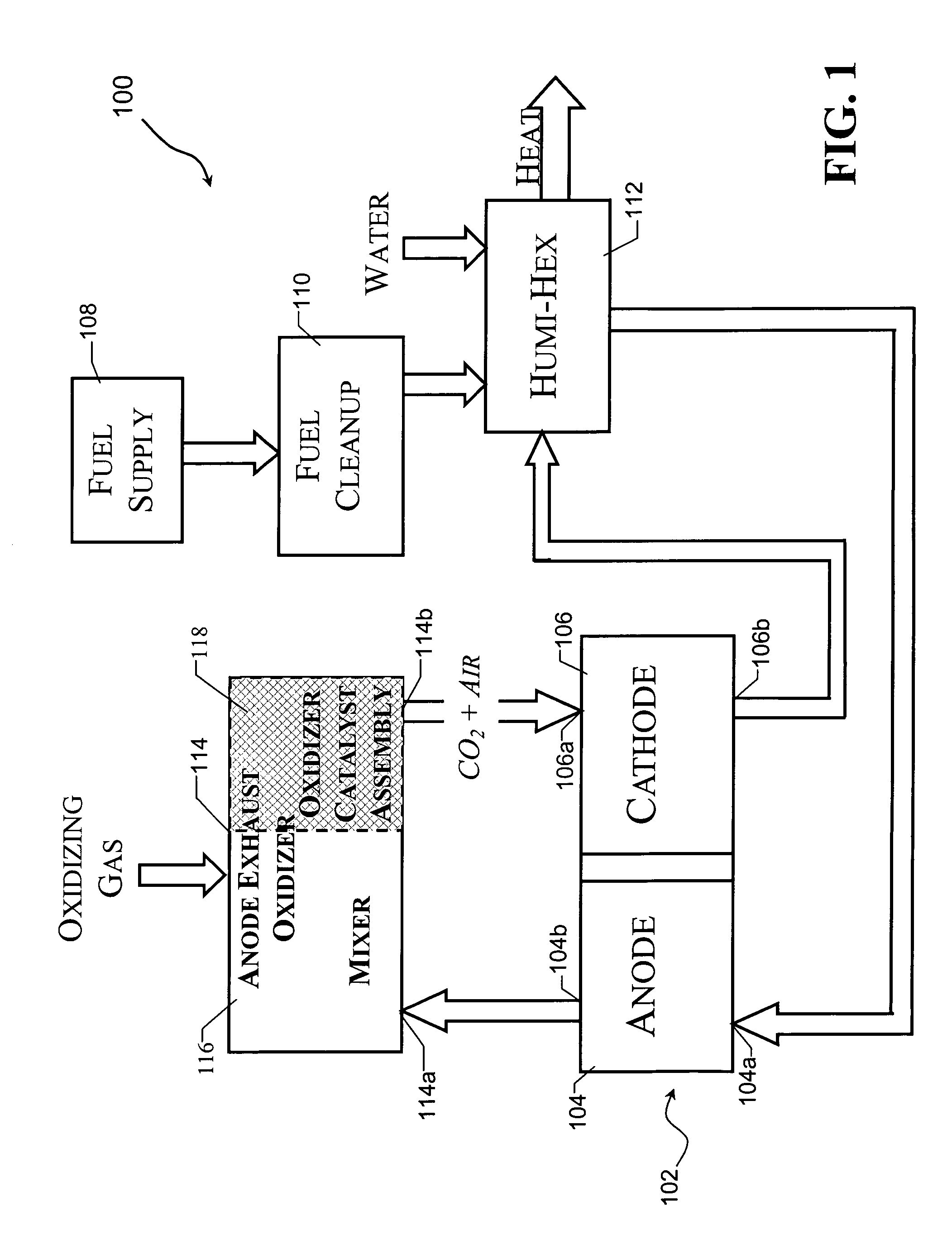Catalyst assembly for use in anode gas oxidizing systems of high temperature fuel cells
a catalyst and gas oxidizing system technology, applied in the direction of physical/chemical process catalysts, cell components, separation processes, etc., can solve the problems of increasing the difference between the cathode inlet stream, increasing the pressure of the anode exhaust stream, and increasing the temperature distribution from one end of the assembly, so as to reduce increase the density of the channel, and increase the width of the channel
- Summary
- Abstract
- Description
- Claims
- Application Information
AI Technical Summary
Benefits of technology
Problems solved by technology
Method used
Image
Examples
Embodiment Construction
[0019]FIG. 1 shows a schematic view of a fuel cell system 100 which is adapted to use an oxidizer catalyst assembly 118 in accordance with the principles of the present invention. The fuel cell system includes a fuel cell 102 having an anode 104 and a cathode 106. Fuel gas, such as natural gas, is supplied to the system 100 from a fuel supply 108. Before being conveyed to the anode 104, the fuel undergoes fuel cleanup processing at the fuel cleanup stage 110, and is combined with water and heated in a heat exchanger 112. Processed heated fuel enters the anode 104 through an anode inlet 104a to undergo an electrochemical reaction. Spent fuel leaves the anode 104 through an anode outlet 104b as the anode exhaust gas.
[0020]In the illustrative case shown, the oxidizer catalyst assembly 118 is included in an anode exhaust gas oxidizer 114 whose inlet 114a is coupled to the outlet 104b of the anode 104. The anode exhaust gas oxidizer 114 also includes a mixer 116 which receives the anode ...
PUM
| Property | Measurement | Unit |
|---|---|---|
| distance | aaaaa | aaaaa |
| distance | aaaaa | aaaaa |
| width | aaaaa | aaaaa |
Abstract
Description
Claims
Application Information
 Login to View More
Login to View More - R&D
- Intellectual Property
- Life Sciences
- Materials
- Tech Scout
- Unparalleled Data Quality
- Higher Quality Content
- 60% Fewer Hallucinations
Browse by: Latest US Patents, China's latest patents, Technical Efficacy Thesaurus, Application Domain, Technology Topic, Popular Technical Reports.
© 2025 PatSnap. All rights reserved.Legal|Privacy policy|Modern Slavery Act Transparency Statement|Sitemap|About US| Contact US: help@patsnap.com



